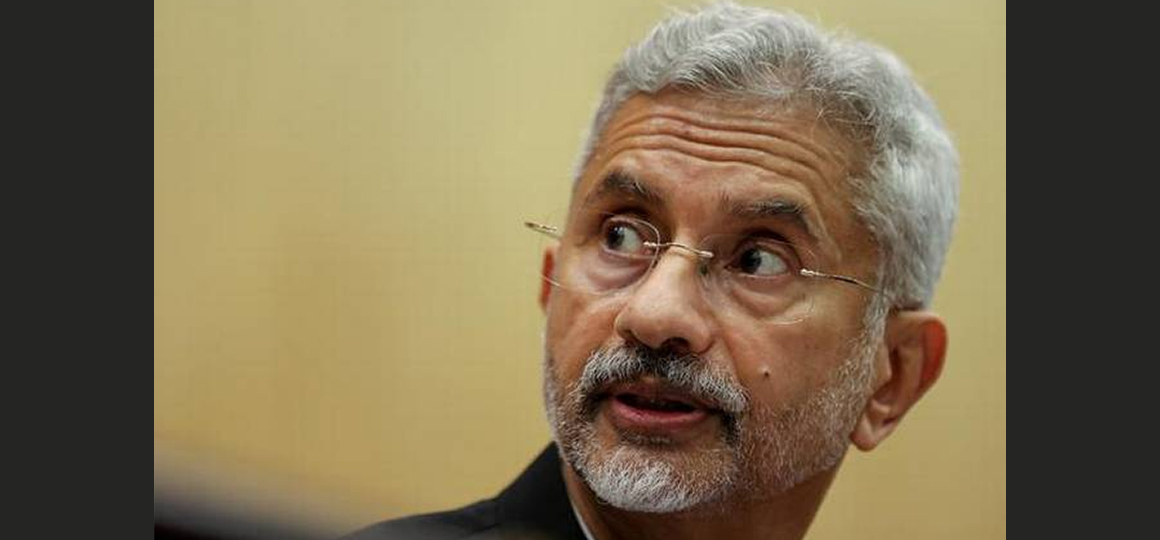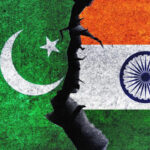It also signals easing of bilateral tensions
The visit of External Affairs Minister S. Jaishankar to Tehran to attend the swearing-in ceremony of Iranian President Ebrahim Raisi on Thursday marks a milestone in recent attempts by both sides to reset the ties that have been under strain for several reasons, including India cancelling oil imports due to the U.S. sanctions, progress in Chabahar, and Iranian comments on Kashmir over the past few years. They also signal that India will continue to walk its tightrope balance on ties with Iran on one side, and Iran and the U.S., and West Asian adversaries, including Saudi Arabia and Israel, on the other.
“During his visit, EAM will call on the President, and on the sidelines, will also meet other leaders,” the Ministry of External Affairs (MEA) said in a statement ahead of the visit, Mr. Jaishankar’s second one to Tehran within the space of a month. In early July, then newly-elected Mr. Raisi made a break from protocol to meet the EAM and invited the government to attend.
India has attended swearing-in ceremonies of Iranian leaders before. Former Vice-President Hamid Ansari and then former Petroleum Minister Nitin Gadkari led the Indian participation both times former Iranian President Rouhani was sworn in (2013 and 2017), but the timing of Mr. Jaishankar’s visit is of particular note.
To begin with, the EAM’s visits come amidst rapid developments in Afghanistan, with the U.S. completing the pull-out of troops and the Taliban increasing its attacks on Afghan cities.
‘A common concern’
“The rapid advance of Taliban concerns both India and Iran. Iranian Foreign Minister Zarif has called an [Islamic Emirate in Afghanistan] as a ‘security threat for Iran and India and an existential threat for Pakistan’. Given this context, and common interests, it is necessary for India and Iran to cooperate more closely, particularly on Afghanistan, and work to support the democratically elected Ghani government,” former Indian Ambassador to Iran, D.P. Srivastava told The Hindu, referring to remarks made by Mr. Zarif during the Raisina Dialogue in April last.
With the U.S.-Russia-China-Pakistan grouping on Afghanistan deciding to meet again in Doha next Wednesday, India and Iran also share a common bond as the two regional powers left out of the “Troika plus”.
Secondly, the fact that the EAM is himself participating in the ceremony, without delegating it to another Minister, puts a spotlight on India’s desire to build ties with Mr. Raisi in particular, who as the Chief Judge of Iran prior to this, was placed on the U.S.’s list of individuals sanctioned in November 2019.
“Raisi was involved in the regime’s brutal crackdown on Iran’s Green Movement protests that followed the chaotic and disorderly 2009 election. Previously, as deputy prosecutor general of Tehran, Raisi participated in a so-called “death commission” that ordered the extrajudicial executions of thousands of political prisoners in 1988,” the U.S. Treasury had claimed in its statement of designations.
Despite campaign promises to reverse the Donald Trump policy on Iran, the Biden administration has yet to withdraw most of the additional sanctions placed in 2017-2018 nor have talks about rejoining the Joint Comprehensive Plan of Action multi-nation made headway after six rounds of talks.
That the EAM’s travels to Tehran book-ended a visit to Delhi by U.S. Secretary of State Anthony Blinken indicates India will continue to walk its tight-rope between its traditional ties with Iran and the growing strategic partnership with Washington. In addition, the travels come amidst a new row between Iran and Israel over an attack on Israeli-owned oil tanker MV Mercer Street, in which two crew members – a British national and a Romanian citizen – were killed.
“The presence of the EAM at the swearing-in is itself a pointer to the view held by India at the highest level. We have common interests in the region, which cannot be a subset of other relations, even though those relations are important too,” said former Ambassador Srivastava, when asked if India’s ties with the U.S. and Israel would in any way be affected by the visit, and listed history, culture, energy security and connectivity as areas that bind India-Iran ties.
Finally, the rapid flurry of meetings to Teheran and Mr. Zarif’s engagement with Delhi indicate a desire to move on from some of the tensions in ties during the Rouhani era. The biggest blow to bilateral relations came from India’s decision to accept the U.S. sanctions against Iran and “zero out” oil imports, just a year after the Modi-Rouhani 2018 meeting had declared India would increase it energy intake from Iran.
Subsequently, adherence to the U.S. restrictions and growing violence in Afghanistan has curtailed progress in the Chabahar port project, and saw India out of the Chabahar railway project to Zahedan as well.
India’s suspicions
India’s suspicions of Iran’s commitment have grown over the signing of the $400 billion 25-year infrastructure partnership with China in 2020. In addition, comments by the Iranian leadership, including Supreme leader Khameini and high-ranking clerics, as well as the government, on the Modi government’s decision to revoke Jammu-Kashmir’s autonomy, riled many in New Delhi, given that Iran has rarely commented on India’s internal affairs. While purely coincidental, it is also significant that Mr. Jaishankar’s visit to Tehran comes exactly two years from the day of that decision.
Jaishankar’s Tehran visit significant for timing on Afghanistan
It also signals easing of bilateral tensions
The visit of External Affairs Minister S. Jaishankar to Tehran to attend the swearing-in ceremony of Iranian President Ebrahim Raisi on Thursday marks a milestone in recent attempts by both sides to reset the ties that have been under strain for several reasons, including India cancelling oil imports due to the U.S. sanctions, progress in Chabahar, and Iranian comments on Kashmir over the past few years. They also signal that India will continue to walk its tightrope balance on ties with Iran on one side, and Iran and the U.S., and West Asian adversaries, including Saudi Arabia and Israel, on the other.
“During his visit, EAM will call on the President, and on the sidelines, will also meet other leaders,” the Ministry of External Affairs (MEA) said in a statement ahead of the visit, Mr. Jaishankar’s second one to Tehran within the space of a month. In early July, then newly-elected Mr. Raisi made a break from protocol to meet the EAM and invited the government to attend.
India has attended swearing-in ceremonies of Iranian leaders before. Former Vice-President Hamid Ansari and then former Petroleum Minister Nitin Gadkari led the Indian participation both times former Iranian President Rouhani was sworn in (2013 and 2017), but the timing of Mr. Jaishankar’s visit is of particular note.
To begin with, the EAM’s visits come amidst rapid developments in Afghanistan, with the U.S. completing the pull-out of troops and the Taliban increasing its attacks on Afghan cities.
‘A common concern’
“The rapid advance of Taliban concerns both India and Iran. Iranian Foreign Minister Zarif has called an [Islamic Emirate in Afghanistan] as a ‘security threat for Iran and India and an existential threat for Pakistan’. Given this context, and common interests, it is necessary for India and Iran to cooperate more closely, particularly on Afghanistan, and work to support the democratically elected Ghani government,” former Indian Ambassador to Iran, D.P. Srivastava told The Hindu, referring to remarks made by Mr. Zarif during the Raisina Dialogue in April last.
With the U.S.-Russia-China-Pakistan grouping on Afghanistan deciding to meet again in Doha next Wednesday, India and Iran also share a common bond as the two regional powers left out of the “Troika plus”.
Secondly, the fact that the EAM is himself participating in the ceremony, without delegating it to another Minister, puts a spotlight on India’s desire to build ties with Mr. Raisi in particular, who as the Chief Judge of Iran prior to this, was placed on the U.S.’s list of individuals sanctioned in November 2019.
“Raisi was involved in the regime’s brutal crackdown on Iran’s Green Movement protests that followed the chaotic and disorderly 2009 election. Previously, as deputy prosecutor general of Tehran, Raisi participated in a so-called “death commission” that ordered the extrajudicial executions of thousands of political prisoners in 1988,” the U.S. Treasury had claimed in its statement of designations.
Despite campaign promises to reverse the Donald Trump policy on Iran, the Biden administration has yet to withdraw most of the additional sanctions placed in 2017-2018 nor have talks about rejoining the Joint Comprehensive Plan of Action multi-nation made headway after six rounds of talks.
That the EAM’s travels to Tehran book-ended a visit to Delhi by U.S. Secretary of State Anthony Blinken indicates India will continue to walk its tight-rope between its traditional ties with Iran and the growing strategic partnership with Washington. In addition, the travels come amidst a new row between Iran and Israel over an attack on Israeli-owned oil tanker MV Mercer Street, in which two crew members – a British national and a Romanian citizen – were killed.
“The presence of the EAM at the swearing-in is itself a pointer to the view held by India at the highest level. We have common interests in the region, which cannot be a subset of other relations, even though those relations are important too,” said former Ambassador Srivastava, when asked if India’s ties with the U.S. and Israel would in any way be affected by the visit, and listed history, culture, energy security and connectivity as areas that bind India-Iran ties.
Finally, the rapid flurry of meetings to Teheran and Mr. Zarif’s engagement with Delhi indicate a desire to move on from some of the tensions in ties during the Rouhani era. The biggest blow to bilateral relations came from India’s decision to accept the U.S. sanctions against Iran and “zero out” oil imports, just a year after the Modi-Rouhani 2018 meeting had declared India would increase it energy intake from Iran.
Subsequently, adherence to the U.S. restrictions and growing violence in Afghanistan has curtailed progress in the Chabahar port project, and saw India out of the Chabahar railway project to Zahedan as well.
India’s suspicions
India’s suspicions of Iran’s commitment have grown over the signing of the $400 billion 25-year infrastructure partnership with China in 2020. In addition, comments by the Iranian leadership, including Supreme leader Khameini and high-ranking clerics, as well as the government, on the Modi government’s decision to revoke Jammu-Kashmir’s autonomy, riled many in New Delhi, given that Iran has rarely commented on India’s internal affairs. While purely coincidental, it is also significant that Mr. Jaishankar’s visit to Tehran comes exactly two years from the day of that decision.






NO COMMENT